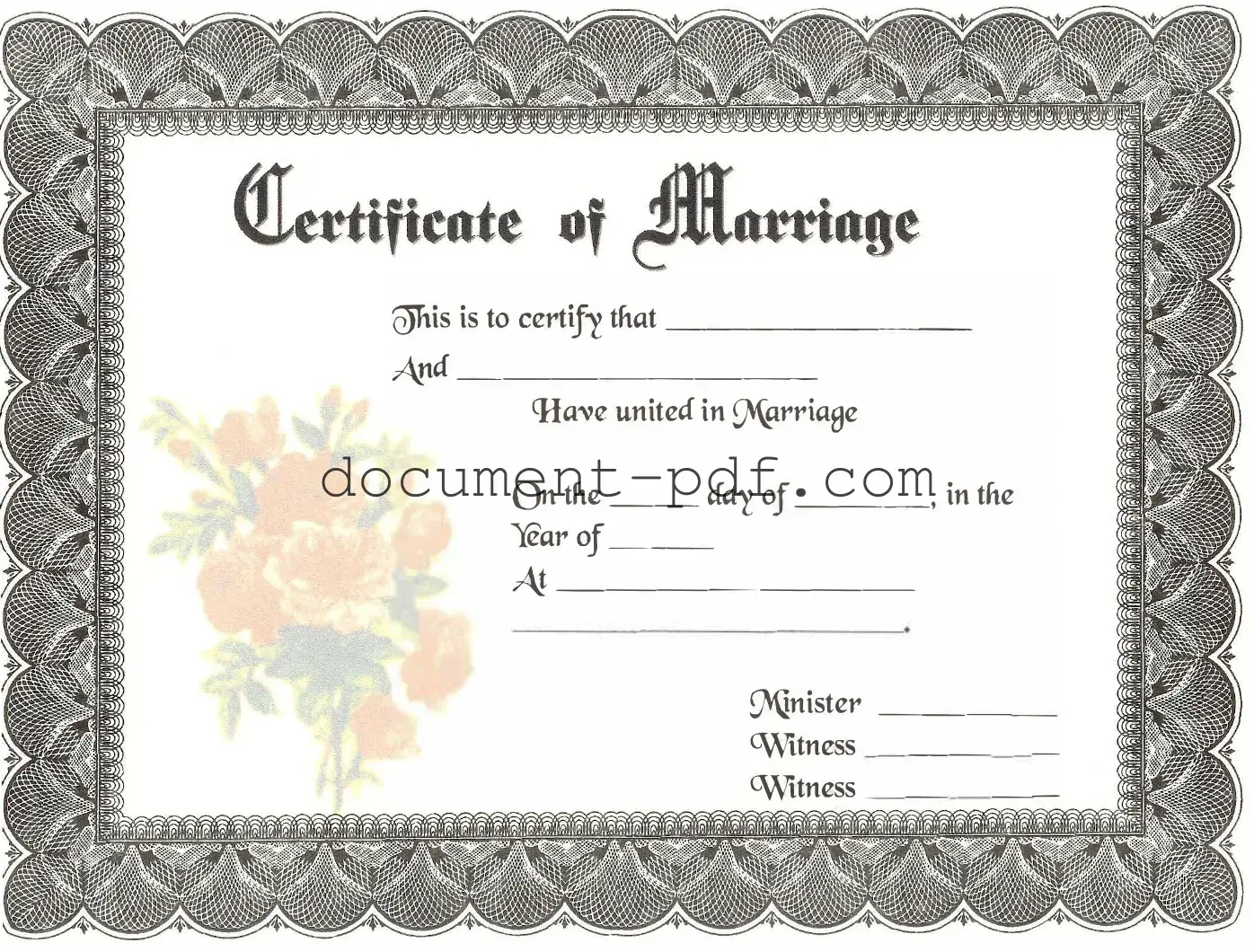When two individuals decide to unite in marriage, one of the essential steps they must undertake is completing a Marriage Certificate form. This document serves as an official record of the marriage and is crucial for various legal and personal purposes. Typically, the form requires basic information about both partners, including their full names, dates of birth, and places of residence. Additional details may encompass the date and location of the marriage ceremony, as well as the names of witnesses. Understanding the requirements for this form is vital, as they can vary by state and may include specific documentation such as identification or proof of eligibility to marry. Furthermore, the Marriage Certificate not only solidifies the union but also plays a significant role in matters such as name changes, tax benefits, and inheritance rights. Ensuring accuracy while filling out the form is paramount, as any errors can lead to complications down the line. Therefore, being informed about the nuances of the Marriage Certificate form can greatly ease the process for couples embarking on their new journey together.

